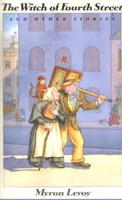An excerpt from a 2005 interview:
I was born here; my oldest brother was born here. If he was alive he’d be over a hundred. I’ll be ninety in December. I got a baby brother who’s going to be eighty. My oldest brother… if he were alive today… he’d be about ninety-six… ninety- seven. My mother had six children… all boys. I lived… first I lived at 51 Sheriff Street… then we moved to 65 Sheriff Street... then we moved to the fancy one on 67 Sheriff Street where we had our own toilet and bath. And November 1930, we moved into the Amalganated on Grand Street..Sidney mentions the Gang bath house. I guess this is what Manny was talking about here. Originally I thought he meant the bath house on Rivington, near Mangin
The first co-op that went up here was the Amalgamated. I went into the army; came back and moved back in here. My brother gave me the apartment. So that was in 1945… the end of World War II.
When I was little… the games. It was rough games. We were east side kids and we played whatever we got a hold of… tag.... stupid games children play.
When I got home from school, first I would ask my mother to cut me a slice of bread with some shmear on it. And it was a treat. Then I went downstairs and played ball or did crazy things that the kids would do. We played ball. At times we broke into a peddler and stole sweet potatoes. That was a treat. We’d put them on the fire. We made a fire out of what we called our election fire… we saved up and we got crates and boxes. And on election day we made a big bonfire. That was a big thing. Then we went down to the Forward building and watched the results come in. We made the fire but I don’t recall who was Mayor or who was Commissioner.
I used to deliver the whiskey and he gave me a half a dollar Every time.
When I got a little older there was a saloon right underneath where I lived on 67 Sheriff Street. So I used to deliver... this was the Prohibition... you couldn’t buy a drink, but he had a saloon. His name was David. I used to deliver the whiskey and he gave me a half a dollar Every time. That was big money. And when we moved out of there in 1930. we moved here…Amalgamated. my father took five rooms. The rent was $62.50 a month. There was a Depression... the heart of the Depression.
I didn’t have too many friends here anyway. I went back to my old street… Sheriff Street On Sheriff Street they had a man and a woman’s bath house... there was one on Allen Street too.
We didn’t have bath tubs where we lived. We had a sink in the kitchen..and you washed up in the kitchen. There was a bath house at 62 Sheriff Street. The name of the bath house was Gang’s. It was owned by a man whose name was Gang. That was his name. He was my neighbor. I think one of his sons is alive today. He owned the bath house.You took a bath and you slept over... they had cots. There was more than one bath house. At 65 Sheriff Street… in the basement… they put in some bath tubs and we used to go in there to bathe. For a quarter, a half a dollar… you took a bath. It was a different time. Today... you turn the faucet on you get all the water you want. Then it was different.
In those days my father used to bring home the junk… the salvage. Certain pieces of wood; we put them in the stove and we heated the apartment. I can’t even describe it.
I went to school at PS 34. It was right here on Sheriff and Broome. And then I went to PS 22 on Sheriff and Stanton; from there I went to PS 97 for junior high school; From there I went to Seward Park. And then I got out of there and I went to work.





















